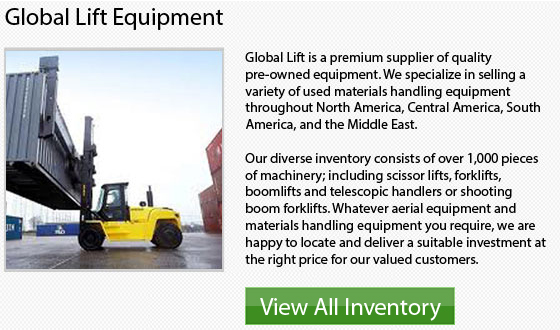
Buying Tips
When purchasing a lift truck, there are actually lots of factors to take into account because this decision could impact lots of things like production, operating expenses, equipment downtime, and even worker morale.
Here is a brief list of factors to consider when deciding on a new or second-hand forklift. There is certainly several particular questions the sales consultant must address in order to help you pick the best alternative that is right for your company.
Step 1: Identify Your Needs
Taking the time to identify your requirements will help ensure that you can find a capable equipment. What size are your average loads? Are they 3,000 pounds to 35,000 pounds or even heavier? How many hours every day would you be utilizing this machinery? Would you be running the machinery indoors or outdoors or potentially both? How wide are your narrowest aisles to travel through? Answering these questions correctly will make sure that you are happy with the model you choose.
Step2: New Vs. Used Lift Trucks
If you are planning to utilize your lift truck more than 4 hours a day, you will probably want to buy a brand new model. The warranty benefits alone will come in handy. A used alternative will more than likely be enough for infrequent applications and light duty.
Step 3: Fuel Options
Typically, the large batteries which power electric forklifts could run for an 8 hour shift. The electric units are best suited for indoor use since they generate no harmful emissions. Though electric models are normally more expensive than various other kinds of lift trucks, they have lower operating expenses. Electric forklifts are much quieter to run and do not have fuel storage needs to consider. Also, these machinery have less moving parts so they have a longer life span because they have less components to get worn down.
Among the downsides of the battery operated forklifts is that they need battery recharging stations and this can take approximately 8 hours. There is an added 8 hours needed for cooling. Recent changes have made their way onto the market so as to considerably lessen charging time. The fast-charge technology has become a wonderful new thing.
Step 4: Tire Choice
Common forklifts use cushion tires made up of solid rubber or they will be outfitted with pneumatic or air-filled, inflated tires. Some forklifts would utilize a solid pneumatic tires, which is a combination of the two kinds of tire. The pneumatic tire style is great for outside applications. Cushion tires are best for indoor applications and solid pneumatic tires are the perfect alternative for dangerous work environments where there is a risk for regular tires being popped by rough terrain or sharp objects.